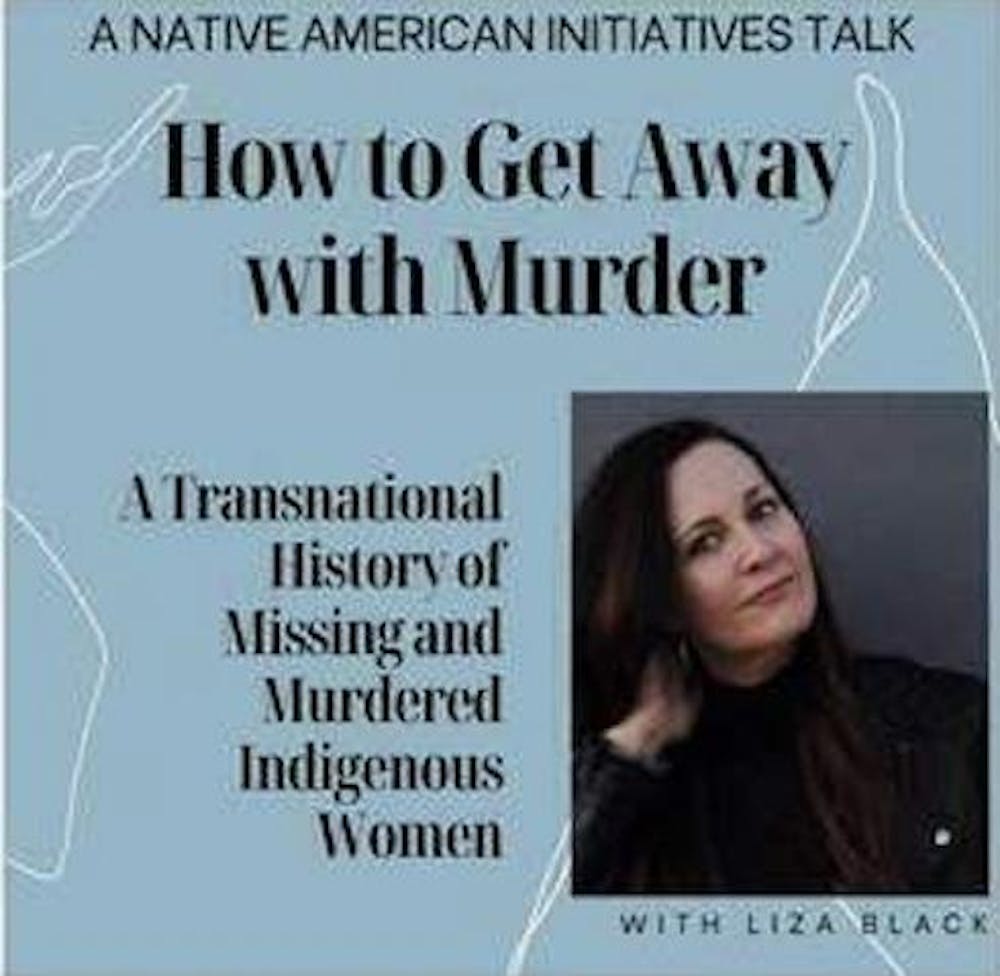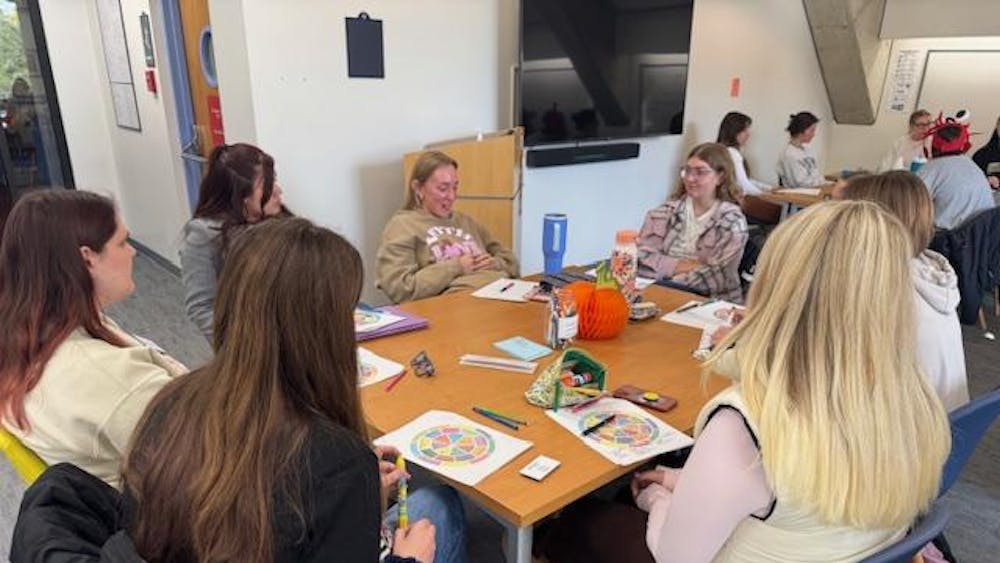Liza Black, an associate professor of history and Native American Studies at Indiana University, gave a lecture on April 15 about her book "How to Get Away with Murder," which explores six cases of missing and murdered Indigenous women, girls and non-binary people across Canada, Mexico and the United States.
“Dr. Liza Black examines the intersection of representation and violence as a citizen of Cherokee Nation to develop a lifelong interest in studying Native identity and struggle and detailing the history of Native peoples and violence from citizens and the state,” professor Ashley Bird, a professor of Native American studies in the American Studies department, said.
Black started her lecture with a land acknowledgment claiming Notre Dame is on the land of the Peoria, Potawatomi, Kaskaskia and Miami peoples.
“It is of the utmost importance for me to recognize that these are people of the present who engaged with Notre Dame and other communities in northern Indiana in powerful and important ways,” she said.
In "How to Get Away With Murder," Black explores six cases of missing or murdered women, pointing to common threads between the circumstances in which each individual was murdered or abducted. “What I most want to understand is how Canada, the United States and Mexico got away and got away with the crime of murdering Native women and two spirits and how this actually echoes the larger story of America’s as a crime,” Black said.
The first case that Black presented was about the death of a woman named Lavina or Gloria Moody, who was abducted on the “Highway of Tears” in British Columbia. She was sexually assaulted and murdered, and her brother, who was 19 years old and intoxicated at the time, was blamed for her death.
“The RCMP [Royal Canadian Mounted Police] turned on Lavina’s family immediately. They incarcerated her younger brother, for the murder despite knowing how she died and the impossibility of him having done it,” Black said. Her research has revealed that Lavina’s killers were likely four men, one of whom is a police officer who is alive and still stalks and harasses the family.
Chapters two and four also address the role of police in the murders and abductions of Indigenous women.
“Incarceration relies on the legal system and policing to uphold incarceration, and police have been given nearly free rein to act without limits or consequences when encountering Indigenous people,” Black said. “Over the 20th century, police and armies have acted with impunity, especially when it came to Indigenous women.”
In case three, Black addressed the disappearance of Fred or FC Frederika or Beyonce Martinez in Cortez Colorado in 2003. “Martinez was targeted for violence because of being Navajo (or Diné) and their embrace of gender fluidity,” said Black. “They died at the hands of an intersexual settler violence that targets trans, non-binary, two-spirit and queer Natives for their refusal to adhere to the gender norms forced upon Native communities by European colonizers.”
After Martinez was killed, the police talked badly of Martinez’s mother and shared her address. The district attorney refused to pursue justice and openly sympathized with the murderers.
Black discussed the important part of Native mothers in the history of missing and murdered Indigenous women. Black pointed to the case of an Indigenous woman named Savannah, who was killed and had her child was abducted. When the infant was found by police, she was not returned to her father or grandparents for three months in what Black called a “second abduction.” The separation of native children from their parents dates back to the boarding school era, Black said.
When asked about the struggles of being an Indigenous woman who collects stories from family members of murdered and missing Indigenous women, Black said that it was difficult but rewarding work. She said when she has to go over an autopsy in extreme detail, she gets nightmares.
Black explained what drives her to do the work she does.
“My intention is that readers will see that Native people are still here, still fighting for their lands and sovereignty, and this unresolved struggle is the cause of the crisis,” Black said. “The solution to the crisis [of murdered and missing Indigenous women] lies outside the nation-state, including the carceral state and its faith in justice via punishment.”










